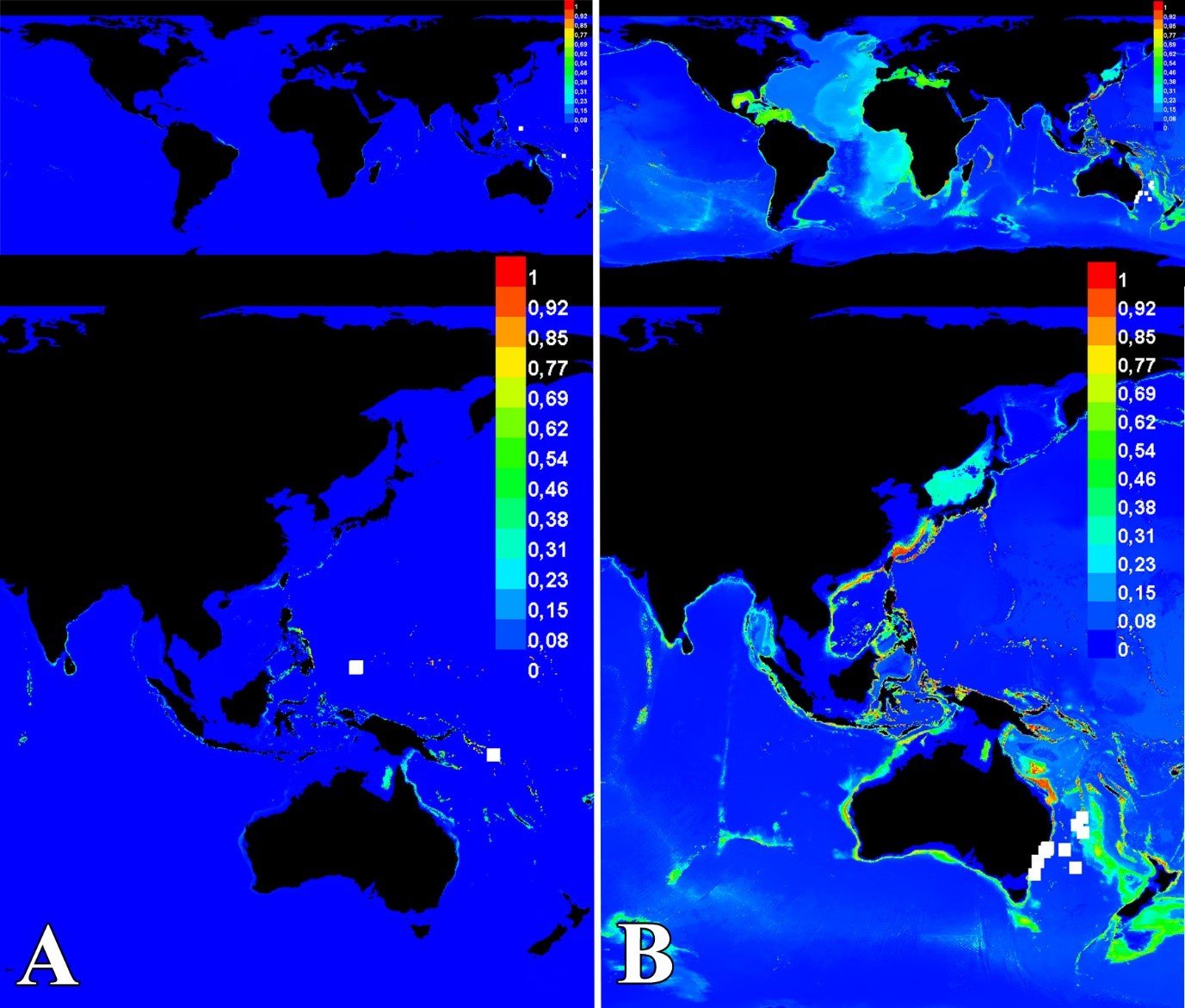A look to the past to predict the future
Jellyfish, anemones and corals can be an oracle for the oceans!

© Australian Museum
The use of occurrence or locality records of coral, jellyfish and anemones (animals that have stinging cells and can be grouped under the name Cnidaria) may be a very important resource for estimating both current and future species distributions and, consequently, relevant areas for preservation in the ocean. Visiting AMRI Collection Fellowship recipient, Sérgio Stampar, recently evaluated the cnidarian collection of the Australian Museum to suggest important areas for marine conservation around Australia and explains here:

© Sergio Stampar
One of the most frequent questions asked about scientific research on marine invertebrates is the usefulness of the data that is generated. Generally, this is because people overlook that we are in an interdependent ecosystem and each organism acts as a piece of a huge puzzle. One of the main pieces of this enormous puzzle is the group (phylum) Cnidaria, which includes jellyfish, anemones and corals. These animals act at different levels of trophic (food) chains and are fundamental for the whole maintenance of the life of the oceans, which enables and sustains life on planet Earth.

© Sergio Stampar
One way to study these animals is to record and compare the occurrence areas of different species of the group. An important resource to enable this are scientific collections such as those which are largely held in natural history museums. This is especially the case for marine invertebrates such as cnidarians which often can’t be readily observed in the field and require specialist identification techniques and knowledge. In a recent project, updated identifications based on the study of hundreds of cnidarian specimens of the Australian Museum that had not previously been examined were combined, together with the data for species already identified in the collection, to propose priority areas for conservation.
A total of 400 lots with more than 700 specimens were studied (observed, photographed and identified) and, together with previous records, analysed using a technique named ‘niche modelling’. This procedure estimates possible occurrence areas based on presence and absence data in association with environmental information. The results highlight some very significant areas on the coast of Australia that deserve particular attention for preservation.

© Sergio Stampar
For example, some species are very rarely observed alive and with just a few new records of preserved specimens the expected distribution of one species can change a lot. This was the case for a special group of Cnidaria, the stalked jellyfish (Staurozoa) which had only previously been recorded in the vicinity of South Australia and Tasmania. The results of this study increased the occurrence of a species more than a thousand kilometres to the north at Lord Howe Island. Because this species is only known from (endemic to) Australia, efforts to conserve it rely on local action and a knowledge of where it could possibly occur.
Additional preliminary results from the study also indicate a particularly important area for conservation is adjacent to the Great Barrier Reef, through much of the Coral Sea. Surprisingly this outcome is based on the distribution of a specific group of jellyfish polyps (Coronatae), also known as crown jellyfish, rather than reef building corals that are otherwise a feature of the area. These jellyfish are also very relevant to a range of environmental studies. Some species of this group cause thousands of public health problems in various regions of the world annually as the larvae produced by the polyps (a stage in the complicated life cycle of these animals) can cause a strong hives reaction called ‘seabather's eruption’. Being able to model the distribution of these species occurring on the coast of Australia may help diagnose this health problem correctly. In addition, several times a year each polyp of this group produces hundreds of, usually small, jellyfish. These blooms are an important trophic link in the oceans, the jellyfish feeding on smaller plankton and passing it through the food chain to other organisms. For example, a recent study has shown that some species of birds feed particularly on these jellyfish.

© Sergio Stampar
The project still has a lot more data to analyse. However, results such as this demonstrate that, regardless of the ecological role, many understudied cnidarian species may be very useful as bioindicators. It also underscores the importance and many uses of museum biological collections.
Sérgio N. Stampar (Assistant Professor, São Paulo State University UNESP, Brazil and Australian Museum Research Institute Visiting Collection Fellow 2019)
Stephen Keable (Collection Manager, Marine Invertebrates).












